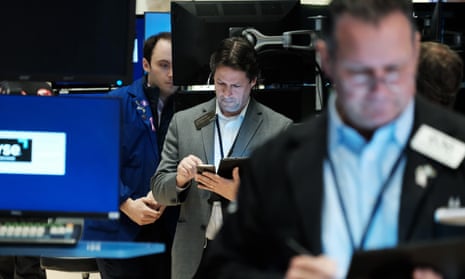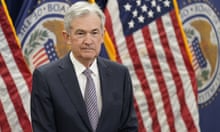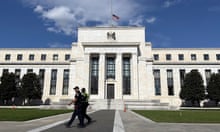The US Federal Reserve voted to increase interest rates to a 16-year high on Wednesday, even as a banking crisis has left the economy wobbling.
The quarter-point rise in the Fed’s benchmark interest rate was the 10th hike since March 2022, when interest rates were zero and the Fed started its rapid inflation-fighting campaign. The interest rate now stands at 5% to 5.25%.
The Fed chair, Jerome Powell, has consistently argued that the central bank must prioritize bringing down inflation, which hit a 40-year high in the wake of the Covid-19 pandemic.
In a statement, the Fed said the banking system was “sound and resilient”.
“Tighter credit conditions for households and businesses are likely to weigh on economic activity, hiring, and inflation. The extent of these effects remains uncertain. The committee remains highly attentive to inflation risks,” said the Fed.
The statement hinted that the Fed’s rate rises – the fastest in 40 years – could be nearing an end. The statement cut a phrase suggesting additional increases might be appropriate that was included in its last rate rise announcement.
At a press conference, Powell said: “There is a sense that, you know, we’re much closer to the end of this than to the beginning.” But he warned that “future policy actions will depend on how events unfold”.
Congress is currently at loggerheads over the government’s borrowing limit and Powell said it was “essential” an agreement was reached. “No one should assume that the Fed can protect the economy from the potential short- and long-term effects of a failure to pay our bills on time,” he said.
In March, the annual inflation rate was 5%, down from its peak of 9.1% in June and its lowest rate since 2021. Inflation has steadily declined over the last few months but remains well above the Fed’s target rate of 2%.
Though overall inflation has been cooling over the last few months, much of the tapering off was seen in the volatile energy sector, which a year ago saw price jumps following Russia’s invasion of Ukraine.
Core inflation, which excludes the more volatile energy and food prices, went up slightly in March as housing prices rose 8.2% over the last year. Fed officials have probably been paying attention to that issue alongside signs that the jobs market remains robust. In March, 236,000 jobs were added to the labor market.
But there have been signs that the economy is starting to cool. Consumer spending has flattened and US manufacturing hit a nearly three-year low in March after years of growth coming out of the pandemic.
This is the fourth quarter-point hike, making it one of the smaller increases after the Fed ratcheted up four three-quarter-point hikes in a row in the summer and fall as interest rates hit 40-year highs.
Still, some had expected the Fed to pause its series of hikes at its last board meeting in March, which took place just two weeks after the collapse of Silicon Valley Bank (SVB). Though the Fed was looking at a half-point increase, it raised rates by a quarter point, which was seen as an acknowledgment that the banking crisis was also likely to affect the economy negatively.
This week First Republic became the latest mid-sized US bank to collapse after worried depositors withdrew $100bn in funds.
But despite the banking crisis, over the last few weeks, various Fed staff have publicly suggested that at least one more rate increase, and perhaps more, are on the table.
Whether or not the Fed will pause or pivot in the future remains unclear as officials will continue to closely watch key economic data for signs of the economy slowing.










